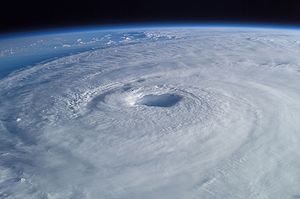
source: wikipedia
Earlier this week, we explored some basic steps you, your family and your business can take to prepare for Hurricane Irma and hurricane conditions. As the storm nears Florida, many people are either still on the road, putting up shutters or getting a hold of last-minute supplies (if any available). Once the storm comes through, there will most likely be limited communication available, and without cell phone towers and electricity, your charged phones may be rendered useless despite your best efforts to have everything charged in advance.
For this reason, we have looked into some of the most useful advice we could find regarding communication before and after an emergency weather situation. The FCC and FEMA have devised a list of valuable tips for being ready when loss of communication is on the horizon. Here are some ways to prepare for and communicate during such emergencies:
Preparation:
- Get back to basics – Radio and television broadcasters are an important source for news, safety and updates on local conditions. For this reason, secure a radio that is either battery-operated, solar-powered or crank-operated so that you can get news updates you will need later. Also, make sure you are familiar with the radio and know how to use it; you don’t want to be figuring it out when you are actually in an emergency situation.
- Have a printed list of contacts – As mentioned in our post earlier this week, a contact list should be printed for your business, as well as your family. Thanks to smart phones, most of us no longer know actual phone numbers anymore, and with contact lists on our phone requiring power, you will need a printed copy on hand. Once printed, seal it in a Ziploc with other important paper documents.
- Know your landline – Depending on the phone service you have for your landline, it may still require power to use it. Check with your service provider to know if you have VoIP, which is provided over broadband connections, or more traditional telephone service, which typically is powered over telephone lines. You will also want to make sure you have a phone that does not require power; cordless phones still require power and will not function during an outage.
During the Storm:
- Limit phone calls – Only use the phone when needed for emergency situations. If you have service, a text to key contacts and family can be helpful for check-in, but you will want to conserve battery-life and keep the network open for others to be able to do the same.
- Know your apps – Quite a few people have been buzzing over apps like “Zello” that allow you to use your phone like a walkie talkie. Make sure you understand the limitations as many still require a wifi connection. An actual walkie talkie system may be worth the investment if you need to reach people nearby.
- Adjust your power – On your cell phone, you have settings to adjust the power use. By adjusting the dimming/brightness of your screen and disabling and closing apps, you can conserve more energy. If you do not have service, turn your phone off and check again later. Do not leave it on and waste battery power just to see when service may or may not be up again.
- Hold on the redial – It is easy to continually call a number multiple times in a row when we don’t reach someone. Try to avoid continuous redials as it can increase network congestion; allow for ample time in between attempts so that you conserve battery-life and avoid crowding the network.
- Car as last resort – If you do not have power in your home and your car is not severely damaged, remember that your car can charge your phone. Only turn on your car if it is safe to do so and is located in an open space. Do not start it up in a garage or closed spaces.
Communication can be frustrating during and after a storm, but be patient and safe. Charge everything before the storm and conserve battery-life after it has passed. Having a plan will alleviate some of the stress and increase the likelihood of making contact when you need it most.
Find more information at www.ready.gov , http://www.redcross.org , or www.fema.gov
For printable details on the tips listed above and more, visit: https://transition.fcc.gov/cgb/consumerfacts/emergency-communications-tips.pdf
For information on construction business and marketing tips, stay connected with the HBW Blog. To get ahead of construction activity and gain access to the latest permitting data in Florida, Texas, Georgia, Alabama and Oklahoma, contact HBW for more information.
